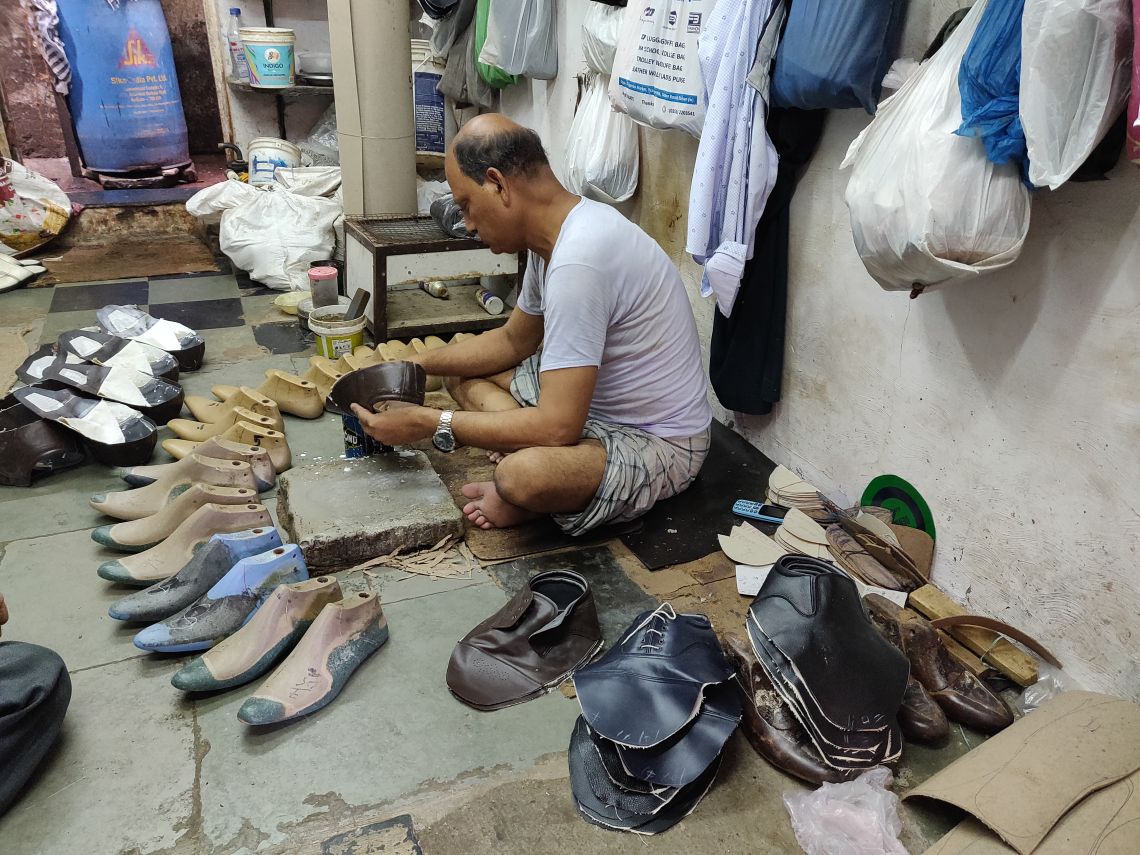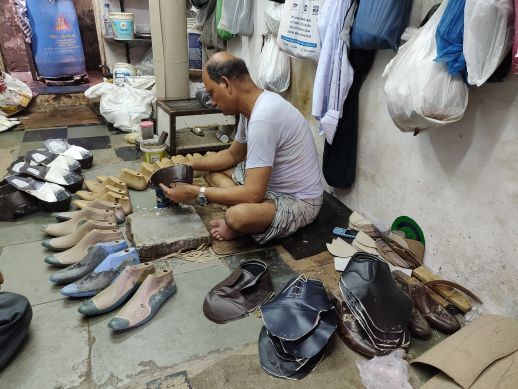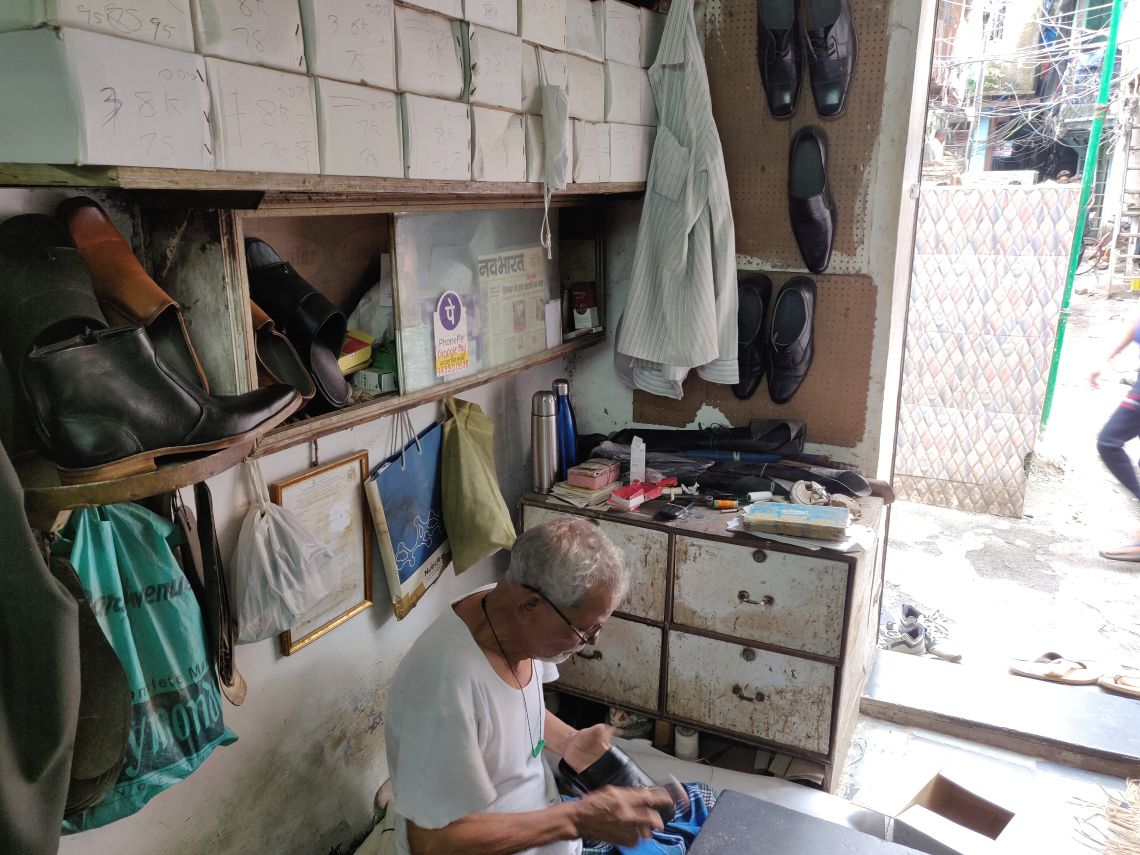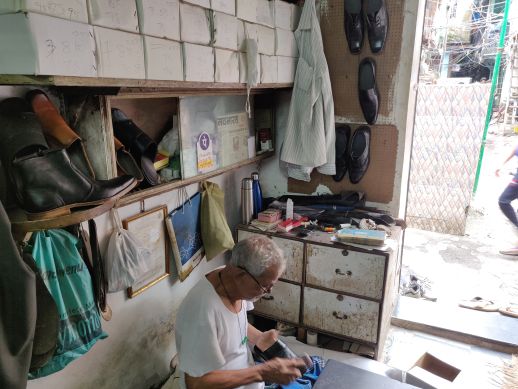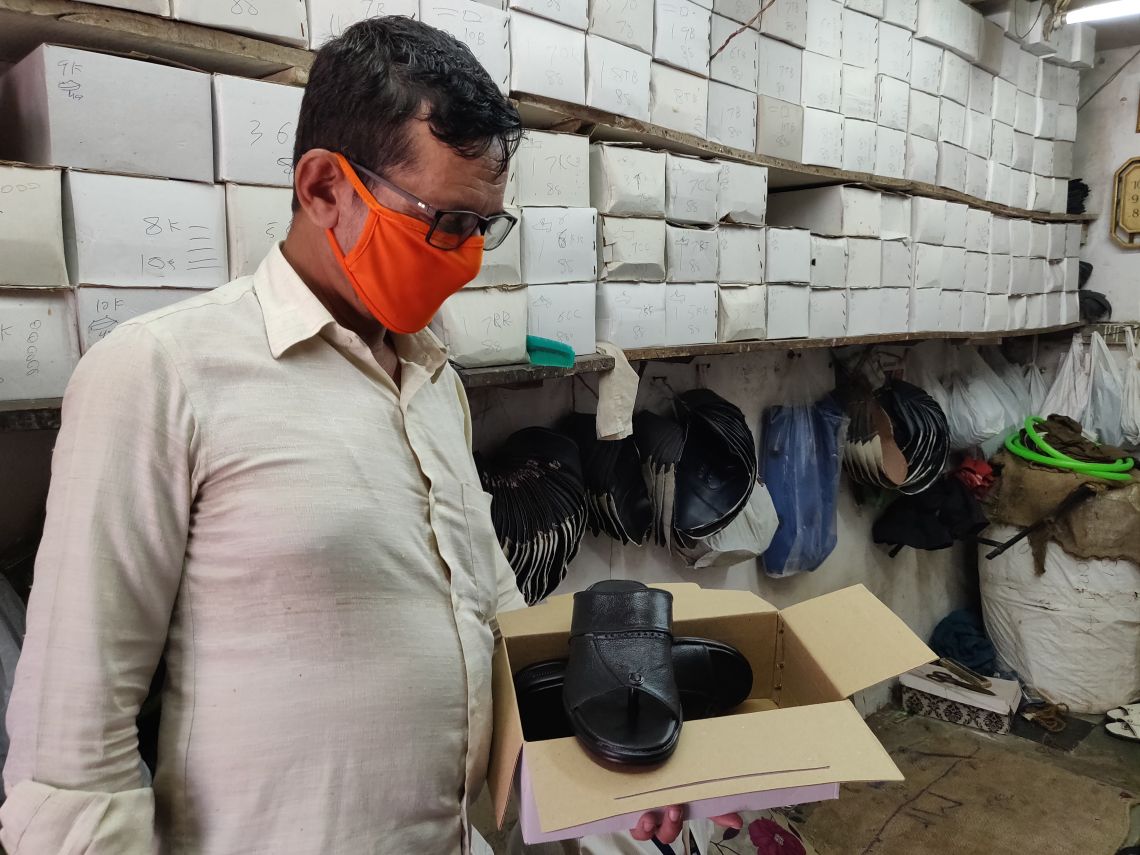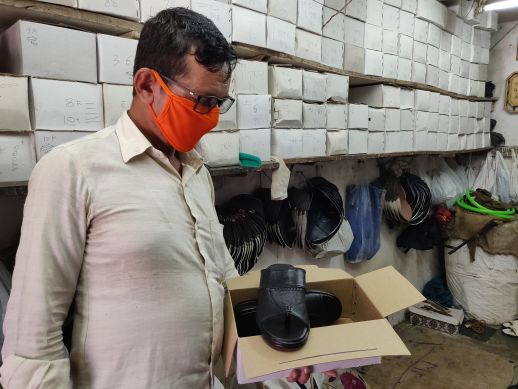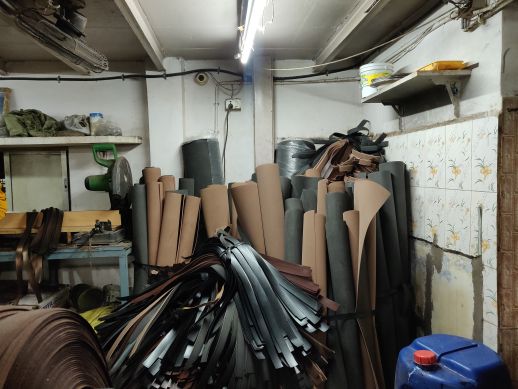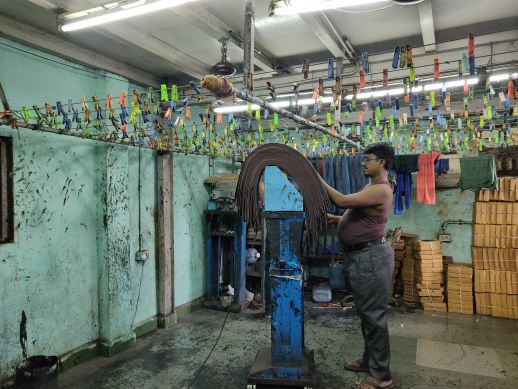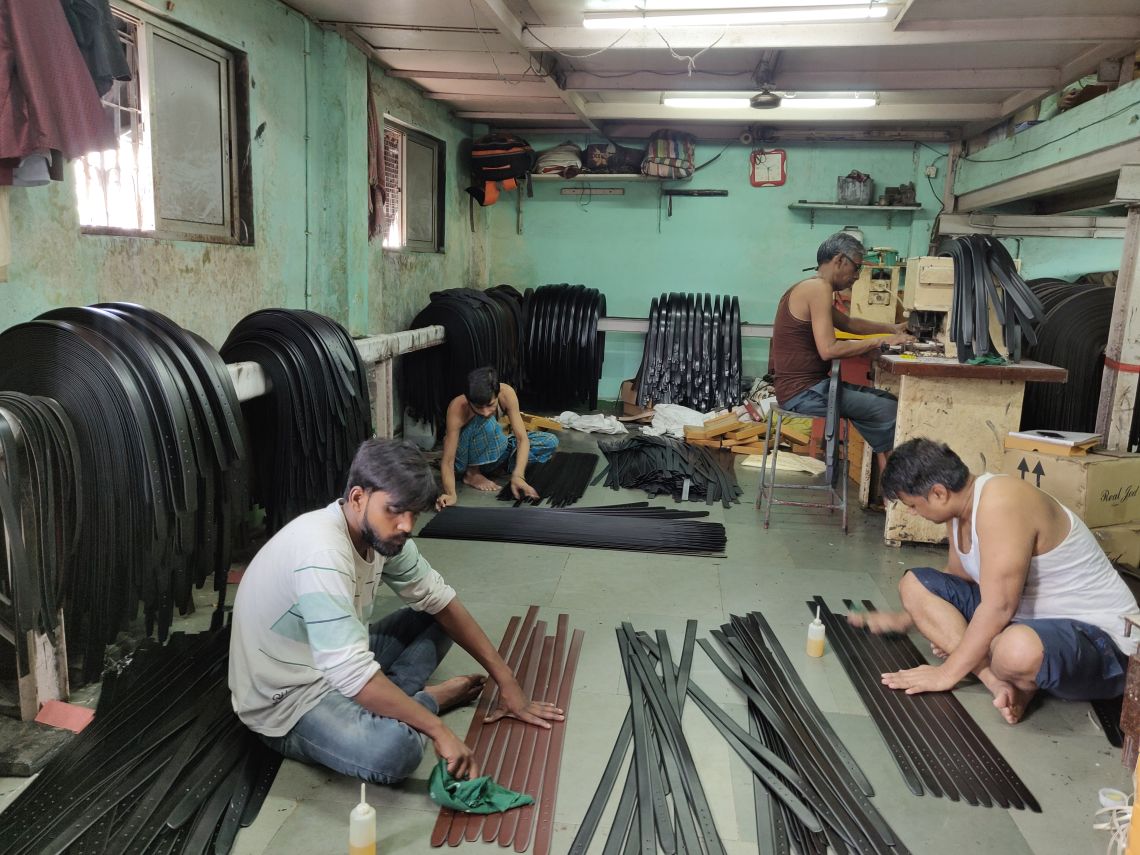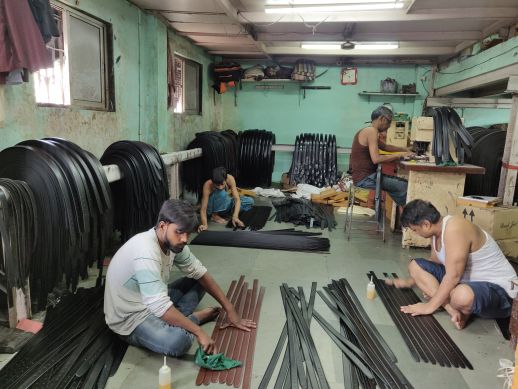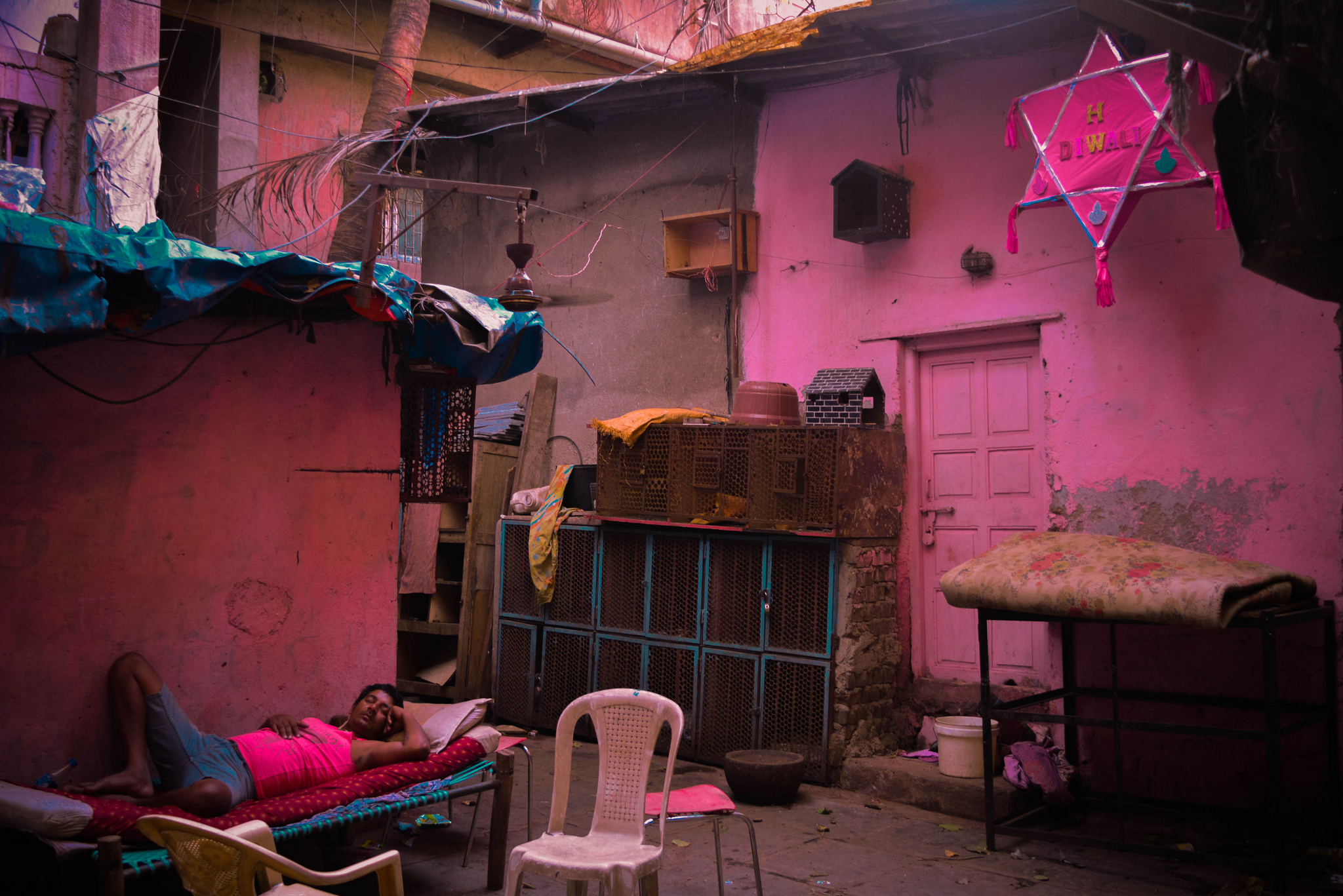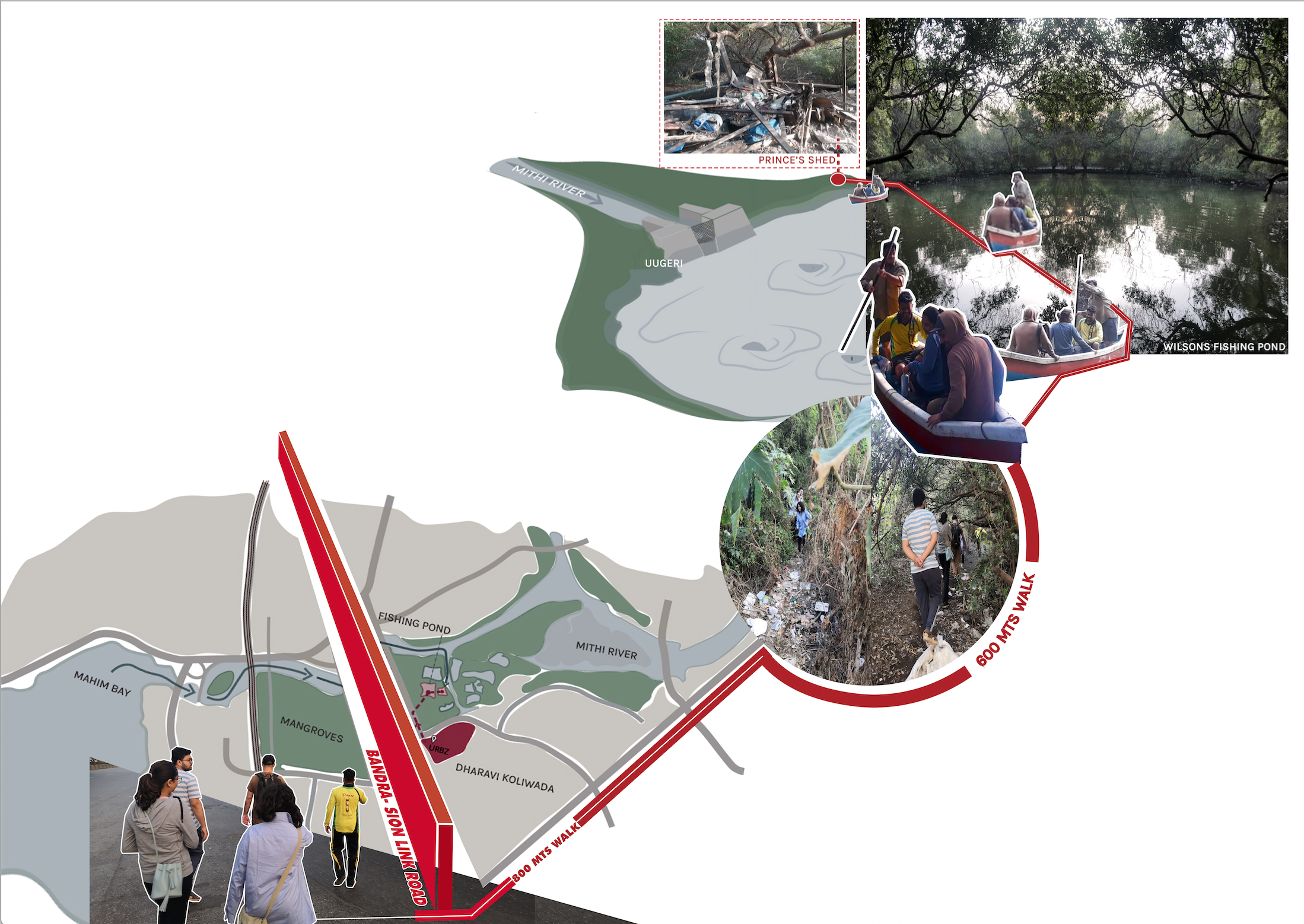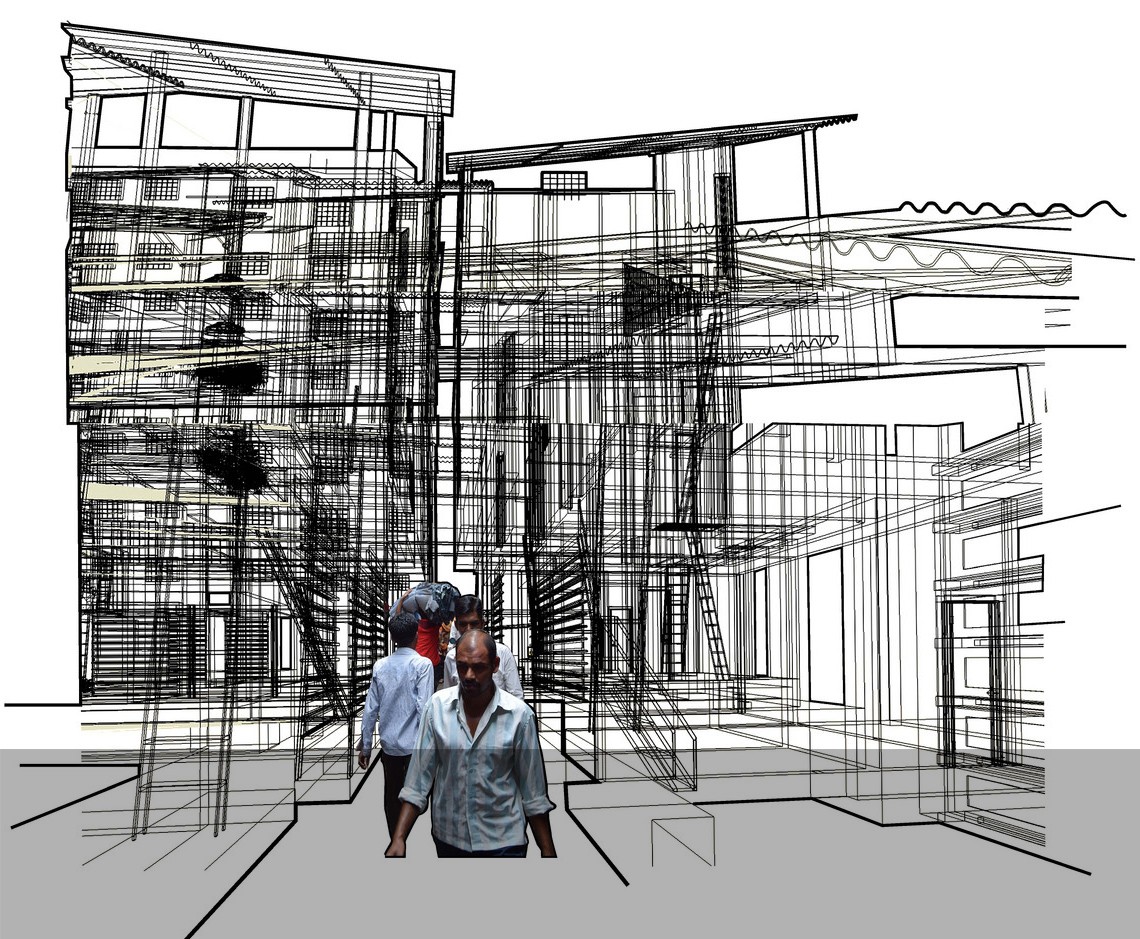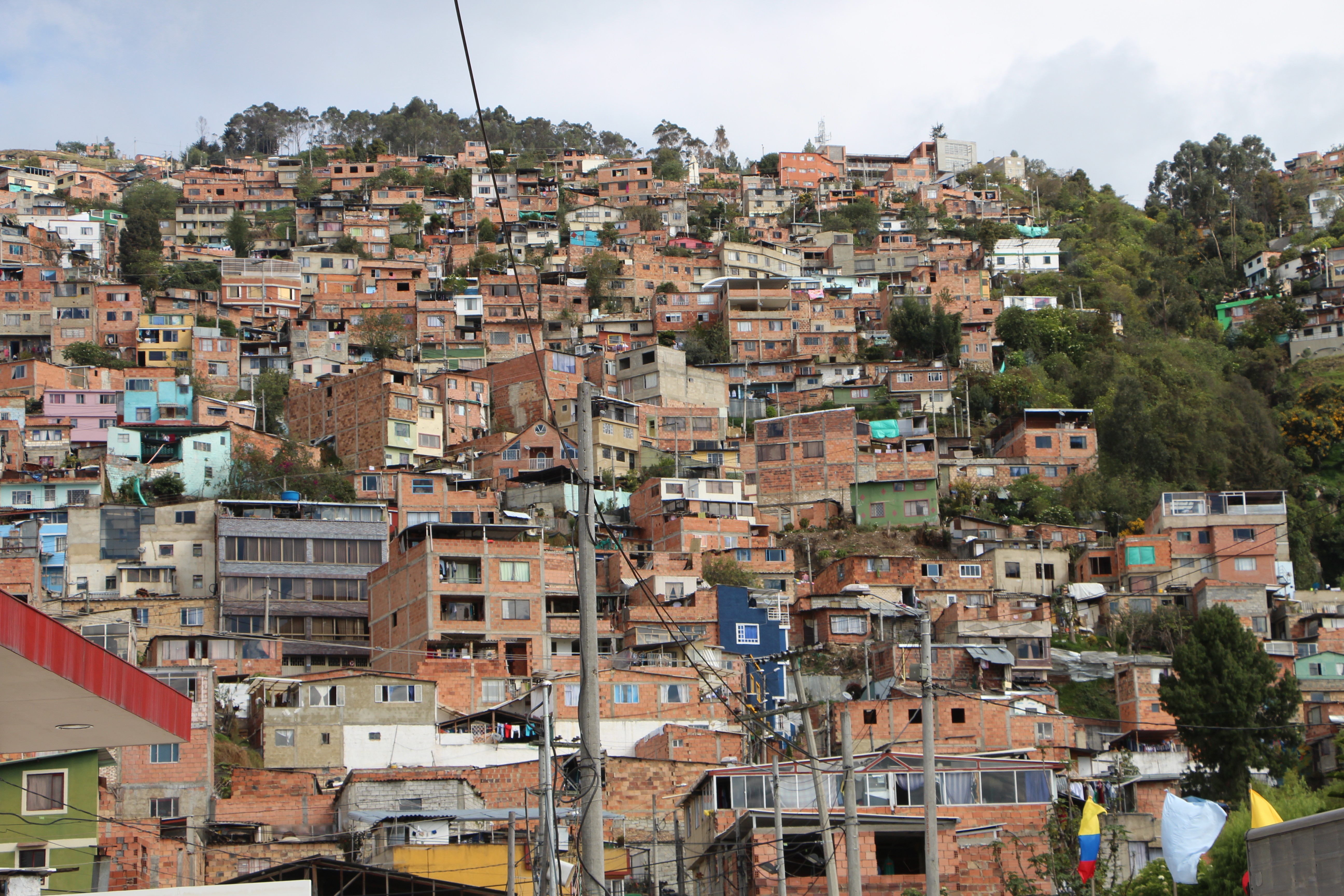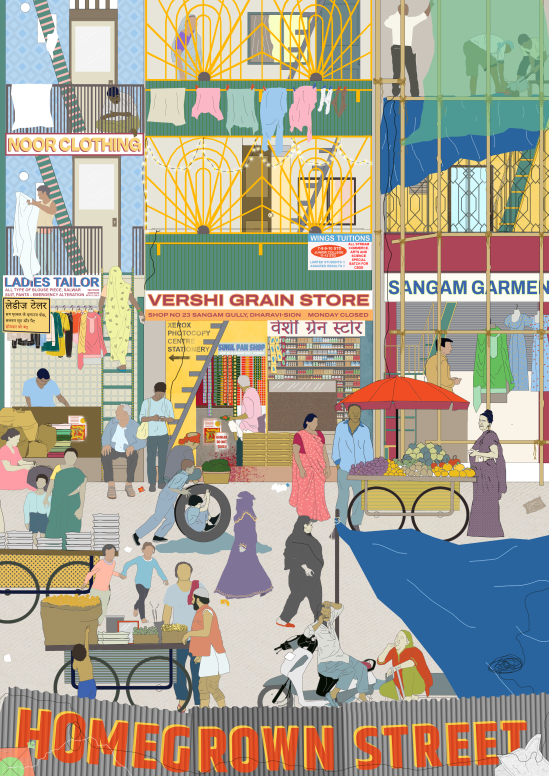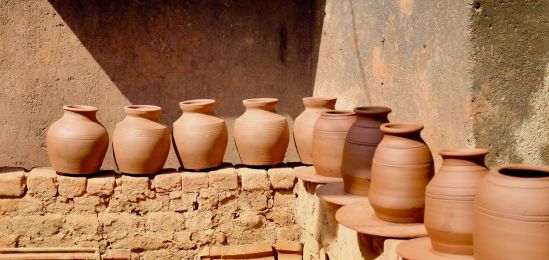The Making of Leather Goods
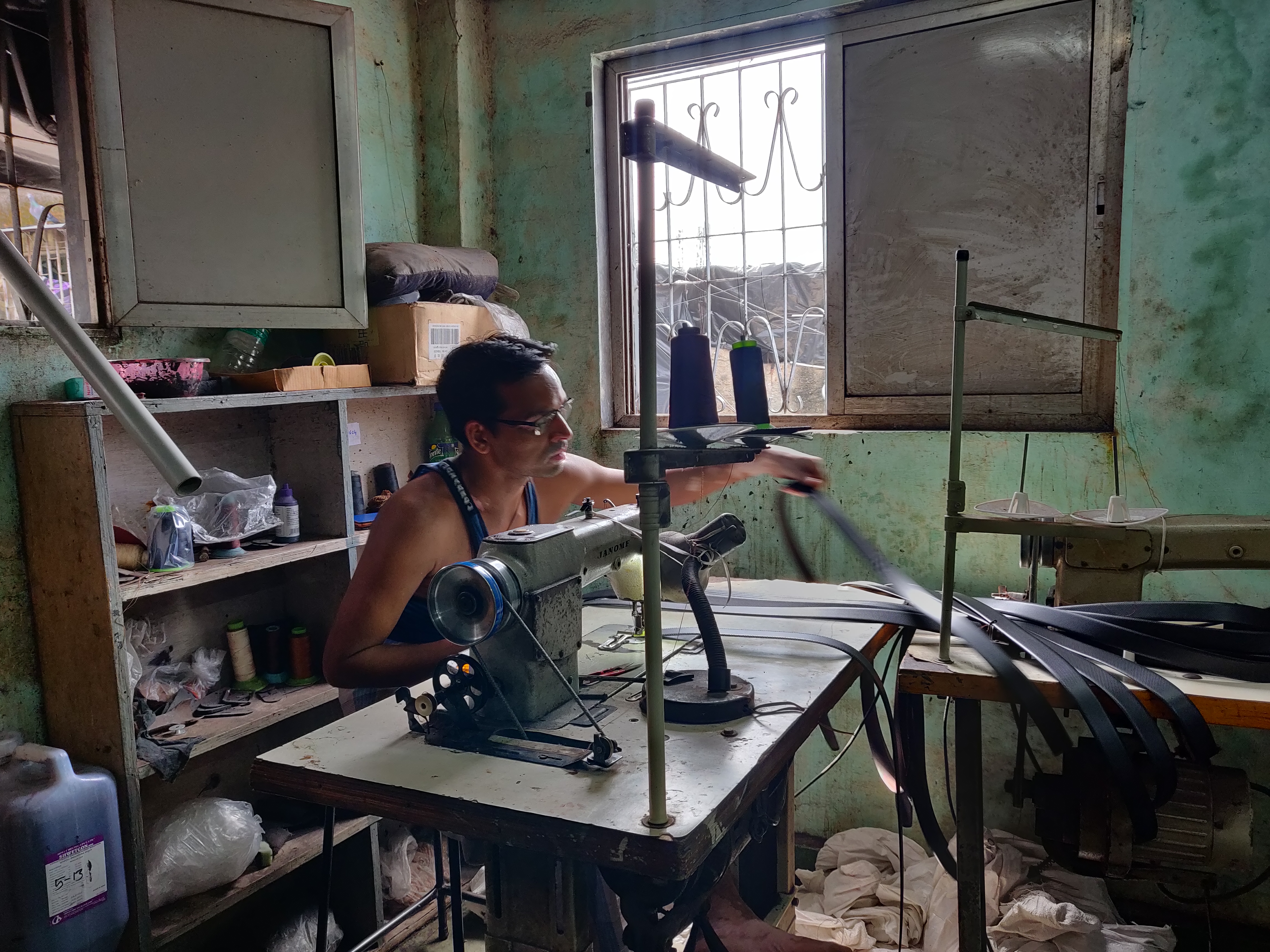
The Making of Leather Goods
The leather industry in Dharavi has been one of the oldest and biggest businesses for many decades now. A diverse range of products is made using leather in Dharavi, from wallets, bags, and belts to jackets, shoes, and other apparel. Production of leather in Dharavi is unique as all processes, from start to finish, take place under a single roof - some work is done by hand, some work with machines. These products are distributed across wide networks- some are sold locally, some are sold in other parts of the city, and many products are exported internationally.
Unlike Kumbharwada, which was a hyper-local, craft-based neighbourhood, leather workshops are widely spread in Dharavi.
Masoom Bhai’s Workshop (Shoes)
Masoom Bhai’s workshop is a narrow single-storey structure, with a mezzanine level which is used for storage and cutting of the leather. The raw materials for the shoes come from Mumbai itself. The making process of the shoes is divided into three parts. The first part involves making the upper part of the shoe, which begins with cutting the leather into appropriate sizes according to the size template, making holes in the surface, and polishing the cut leather. This is done on the upper level of the workshop. The material is then brought to the lower level, where the remaining processes are carried out. The people involved in the second stage of the process, cut and stick an additional cloth layer to the leather to provide comfort to the shoe wearer. After sticking the multiple layers, the cut piece gets wrapped around a shoe mould and kept to dry. Once dry, the piece is put through a heating machine, such that the shape of the shoe gets solidified. The third stage involves adding a sole to the shoe to the upper part using a compressing machine. The final product is then finished and is then prepared to be sold.
According to Masoom Bhai, this is not a process that is done by a single person. It takes a team of 6 people to complete the shoe-making process, over 4-5 days. Similar to many other workshops in Dharavi, the front of the workshop doubles up as the selling front for the shoes.
Jafar’s Workshop (Belts and Wallets)
The second shop we visited was Jafar’s belt and wallet workshop. This workshop is larger than the shoe workshop, with three floors and two mezzanines. Each of these levels is used to carry out different processes for making the belts or wallets. Around 16-18 people work in the workshop at a time. This is also a more machine-oriented process, thus requiring more space dedicated to a singular task. The tasks and equipment are positioned in the workshop in such a way that it functions like an assembly line, with each step taking place and upon completion, the product gets passed on to the next stage, or to the next floor.
Raw material at Jafar’s workshop is procured from Kanpur. The material for the belts and wallets is a much softer material in comparison to the shoes. The first stage of the process is cutting the leather into appropriate sizes. It is then put through a machine where a chemical is added to one side, to which another layer of leather is added. These steps happen over multiple machines and involve 5 people at a time. Once completed, the unfinished product is shifted to the floor above, where it gets stitched along the sides. On the other side of the workshop, the belts are dyed and then hung to dry for several hours. Once dry, the belts are polished, organized into different sizes and lengths, and holes are punched into the belt using another machine. On completion of all the parts of the process, the belts get packed and stored on the top floor.
The wallet-making process occurs on the top floor. Unlike the production of belts in the same workshop, the wallets are mostly crafted by hand. Jafar and his team produce up to 400 wallets a month. The finished wallets get packed and stored alongside the belts until their order gets sent to the retailers and customers.
Leather workshops in Dharavi are unique spaces that allow the entire process of making products, including their sale, to happen in a small, highly efficient space. The leather industry in Dharavi is widely reputed, and rightly so. The optimization of space in either of the workshops seen above, such that a wide array of tasks can be completed within a limited space and limited time frame speaks highly of the quality of the craftspeople and artisans.


